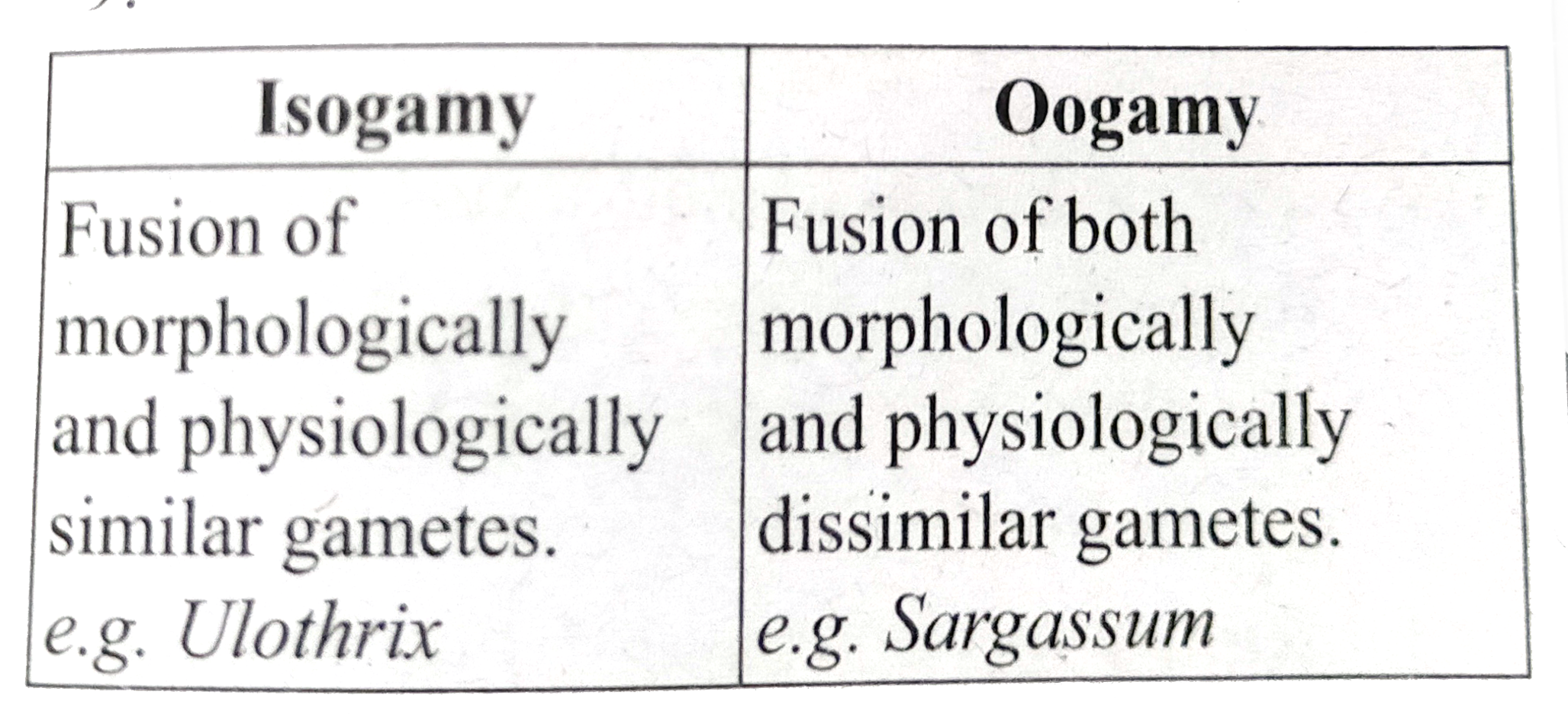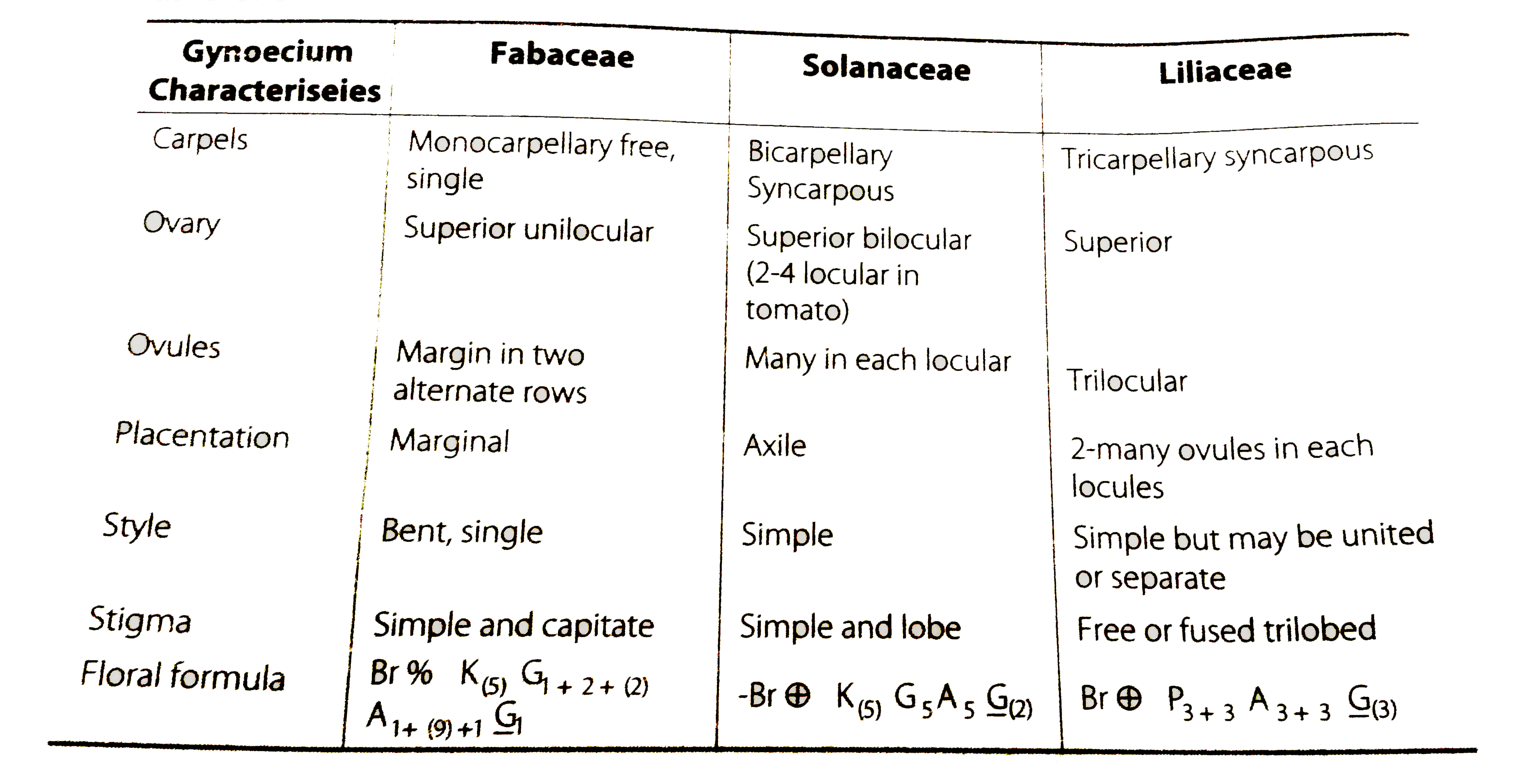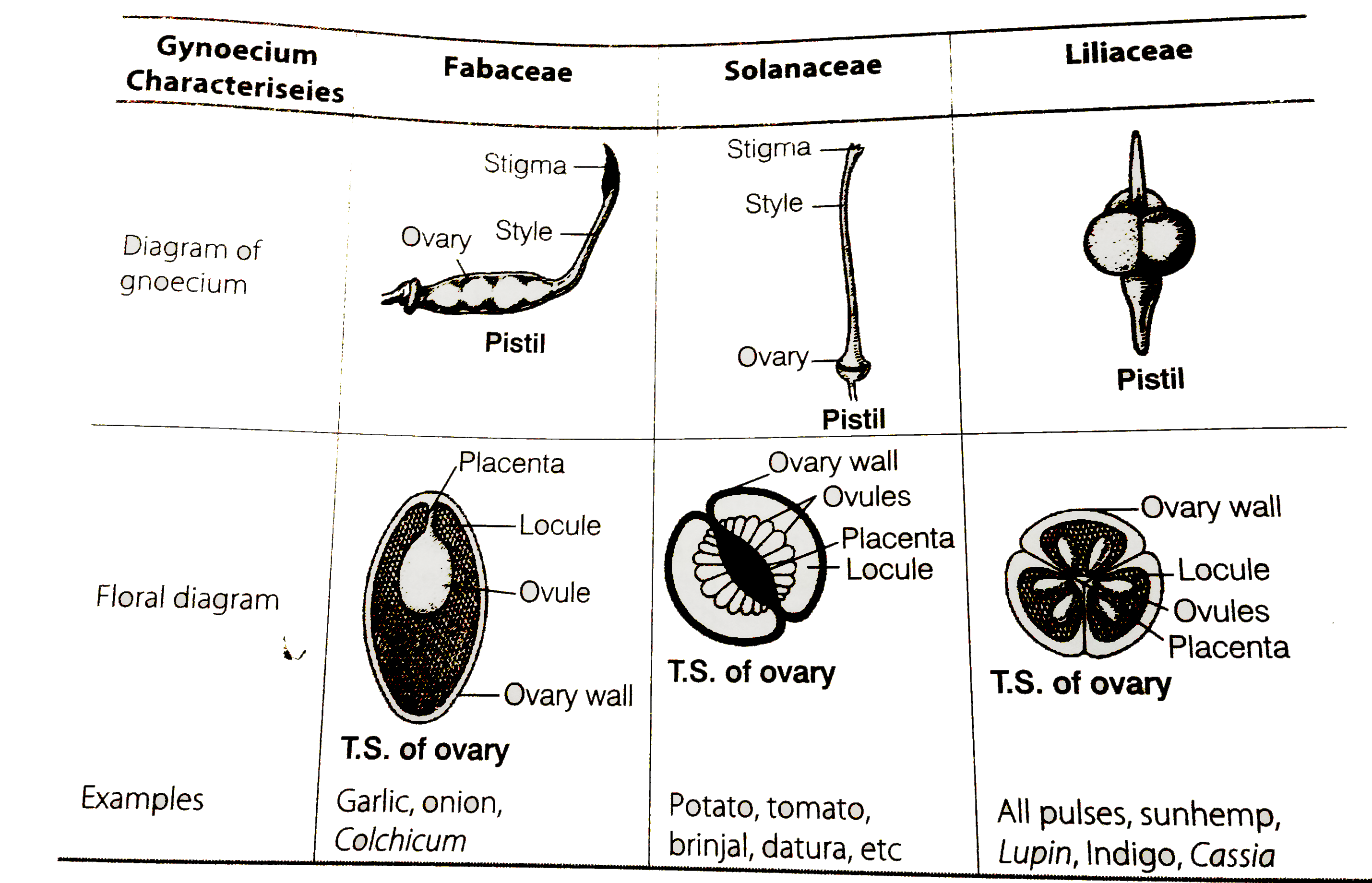InterviewSolution
Saved Bookmarks
This section includes InterviewSolutions, each offering curated multiple-choice questions to sharpen your knowledge and support exam preparation. Choose a topic below to get started.
| 17851. |
Question : Distinguish between Photolithotrophs and Photoorganotrophs. |
| Answer» SOLUTION :`{:("Photolithotrophs","Photoorganotrophs"),("In Photolithotrophs, the hydrogen DONOR is an", "In Photoorganotrophs, the hydrogen"),("INORGANIC substance","donor is an ORGANIC acid or alcohol"),(E.g. "Chlorobium","E.g. "RHODOSPIRILLUM"):}` | |
| 17852. |
Question : Differentiate oviparous and viviparous condition. |
Answer» SOLUTION :
|
|
| 17853. |
Question : Distinguish between Oviparous and Viviparous animals . |
Answer» SOLUTION :
|
|
| 17854. |
Question : Distinguish between ostia and osculum. |
Answer» SOLUTION :
|
|
| 17855. |
Question :Distinguish between Osmoconformers and Osmoregulators. |
Answer» SOLUTION :
|
|
| 17856. |
Question : Distinguish between open and closed circulation. |
Answer» SOLUTION :
|
|
| 17857. |
Question : Distinguish between nitrogenous base and a base found in inorganic chemistry. |
Answer» SOLUTION :
|
|
| 17858. |
Question : How does monotypic genus differ from polytypic genus? |
Answer» SOLUTION :
|
|
| 17859. |
Question : Distinguish between neutrophils and esinophils. |
Answer» SOLUTION :
|
|
| 17860. |
Question : Distinguish between Neurons and Neuroglia. |
Answer» SOLUTION :
|
|
| 17861. |
Question : Distinguish between monoecious and dioecious plants . |
Answer» SOLUTION :
|
|
| 17862. |
Question : Distinguish between mitral valve and semi lunar valev. |
Answer» SOLUTION :
|
|
| 17863. |
Question : Distinguish between manoxylic and pycnoxylic wood. |
Answer» SOLUTION :
|
|
| 17864. |
Question : 1. Differentiate (a) Kwashiorkar from Marasmus(b) Macronutrients from micronutrients |
Answer» SOLUTION :
|
|
| 17865. |
Question : Distinguish between living and non-living things. |
Answer» SOLUTION :
|
|
| 17866. |
Question : Distinguish betweenKaryokinesis & Cytokinesis . |
Answer» SOLUTION :
|
|
| 17867. |
Question : Distinguish between IRV and ERV |
|
Answer» Solution :INSPIRATORY : Reserve Volume (IRV) is the volume or air that can be breathed with forceful inspiration It is about 3000 ml in MAN. Expiratory : Reserve volume (ERV) is the TOTAL volume of airthat can be EXPIRED by a forceful inspiration. It is about 1000 ml in man. |
|
| 17868. |
Question : Distinguish between Isogamy and Oogamy with example. |
Answer» SOLUTION :
|
|
| 17869. |
Question : Distinguish between invertebrates and vertebrates. |
Answer» SOLUTION :
|
|
| 17870. |
Question : Distinguish between intra cellular and extra cellular digestion. |
| Answer» Solution :DIGESTION of food taking place within the CELL is called intracellular digestion (e.g amoeba PARAMECIUM).Digestion of food OUTSIDE the cells in the lumen of the intestine is called extracellular digestion | |
| 17871. |
Question : Distinguish between intracellular and extracellular digestion. |
Answer» SOLUTION :
|
|
| 17872. |
Question : Distinguish between: impulse conduction in a myelinated nerve fibre and unmyelinated nerve fibre |
| Answer» SOLUTION :On a myelinated NEURON, impulse is TRANSMITTED by chemical method. In an unmyelinated neuron, impulse is transmitted by electrical mechanism. | |
| 17873. |
Question : Distinguish between : Impulse conduction in a myelinated nerve fibre and non-myelinated nerve fibre. |
| Answer» SOLUTION :In myelinated nerve FIBRE, axon is enveloped by myelin sheath and schwann.s cell. It has Ranvier.s node at regular INTERVALS. CONDUCTION of nerve impulse jumps from one node to the other - statutory conduction. It is faster. Nonmyelinated fibres, conduction is continually and slow due to ABSENCE of myelin sheath and ranvier.s node. | |
| 17874. |
Question : Distinguish between homopolysaccharides and heteropolysaccharides. |
| Answer» SOLUTION :Homopolysaccharides are formed of only one type of MONOSACCHARIDES e.g. cellulose, starch, glycogen, ETC, while heteropolysaccharides are formed of TWO or more types of monosaccharides of sugar derivatives e-g, chitin, HEPARIN, etc. | |
| 17875. |
Question : Distinguish between hibernation and aestivation. |
Answer» SOLUTION :
|
|
| 17876. |
Question : Distinguish between families - Fabaceae, Solanaceae, Lillaceae on the basis of gynoecium characteristics (with figures). Also welte economic Importance of any one of the above famlly. |
|
Answer» Solution :The difference of above three FAMILIES on the basis of their gynoecium. ` (##KPK_AIO_BIO_XI_C05_E05_035_S01.png" width="80%"> Economic importance of Fabaceae Family : The plants of this family are sources of pulses (dal) and edible oil. Like gram, cowpea, bean, pea as pulses. GROUNDNUT and soyabean as edible oil etc. Indigo is made from INDIGOFERA. It is a source of other products also. Sunhemp or jute as fibre, sesbania and TRIFOLIUM as fodder, Lupin and peas for decoration multinathi as medicine. |
|
| 17877. |
Question : Distinguish between Family and Order. |
Answer» SOLUTION :
|
|
| 17878. |
Question : Distinguish between families-Fabaceae, Solanaceae, Liliaceae on the basis of gynoecium characteristics (with figures). Also write economic importance of any one of the above family. |
Answer» Solution :  Economic Importance of FABACEAE Plants of this family are the sources of pulses and edible oils. Dye is extracted from Indigofera which is a plant of this family. It serves as a source of various other products like FIBRES (sunnhemp ), facter (Sesbania and Trifolium), ornamentals (LUPIN, SWEET pea ) and medicine (multiathi). |
|
| 17879. |
Question : Distinguish between families Fabaceae, Solanaceae and Liliaceae on the basis of gynoecium features. |
|
Answer» Solution :In Fabaceae : The gynoecium is monocarpellary with a superior or partly INFERIOR unilocular OVARY. The ovules are many on the ventral suture and the placentation is marginal. The style is SIMPLE and the stigma is capitate. In Solanaceae : The gynoecium is bicarpellary and syncarpous with a superior and bilocular ovary. There are many ovules in each locule and the placentation is axile. The family is characterized by the presence of swollen placentae and obliquely placed septum in the ovary. In Liliaceae : The gynoecium is TRICARPELLARY and syncarpous with a superior and trilocular ovary. There are numerous ovules in each locule and the placentation is axile. Style is either simple with three distinct or a trilobed stigma. USUALLY a nectary is present on each septum. |
|
| 17880. |
Question : Distinguish between Extrastelar & Intrastelar tissue. |
Answer» SOLUTION :
|
|
| 17881. |
Question : Distinguish between exoskeleton and endoskeleton. |
Answer» SOLUTION :
|
|
| 17882. |
Question : Write the differences between endocrine and exocrine gland. |
Answer» SOLUTION :
|
|
| 17883. |
Question : Distinguish heterochromatin and euchromatin. |
| Answer» Solution :The PORTION of Eukaryotic chromosome which is transcribed into mRNA contains ACTIVE genes that are not tightly condensed during interphase is called EUCHROMATIN. The portion of a Eukaryotic chromosome that is not transcribed into mRNA which remains condensed during interphase and STAINS intensely is called Heterochromatin. | |
| 17884. |
Question : Distinguish between Diploblastic animals and triploblastic animals. |
Answer» SOLUTION :
|
|
| 17885. |
Question : Distinguish between dextrose & sinistrose climbers. |
| Answer» Solution :`{:("Dextrose","Sinistrose"),("CLOCKWISE coiling CLIMBERS are CALLED","ANTI - clockwise coiling climbers are called"),("dextrose. E.g. DIOSCOREA alata.","sinistrose. E.g. Dioscorea bulbifera."):}` | |
| 17886. |
Question : Distinguish between Deoxy viruses and Ribo viruses with example. |
| Answer» SOLUTION :`{:("Deoxy viruses", "riboviruses"),("viruses having DNA are called", "Viruses having RNA are called riboviruses."),("deoxyviruses. E.g. animal viruses EXCEPT HIV.","E.g. plant viruses except CAULIFLOWER mosaic VIRUS (CMV)."):}` | |
| 17887. |
Question : Distinguish betweenDense regular and dense irregular connective tissues |
Answer» SOLUTION :
|
|
| 17888. |
Question : Distinguish between deoxyviruses and riboviruses. |
Answer» SOLUTION :
|
|
| 17889. |
Question : Distinguish between constipation and indigestion. Mention their major causes. |
|
Answer» Solution :In constipation the faeces are retained within the rectum as the bowel MOVEMENT OCCURS irregularly. The reasons for constipation are lack of water intake, lack of fibre in food, lack of EXERCISE, stress and some drugs. In the condition of indigestion the food is not properly digested leading to a feeling of fullness. The causes of indigestion are in inadequate ENZYME secretion, anxiety, food poisoning, over EATING and spicy food. |
|
| 17890. |
Question : Distinguish between cofactor and coenzyme with an example for each |
|
Answer» SOLUTION :COFACTOR inorganic/metallic IONS which form NON protein part of an enzyme. Eg. ZINC in carboxypeptidase. Co-enzyme- Non protein organic part of enzyme/mostly Vitamins e.g FAD/NAD |
|
| 17891. |
Question : Distinguish between: cranial nerves and spinal nerves |
| Answer» Solution :THER nerves which are arising from the BRAIN are CALLED CRANIAL nerves. The nerves which are arising from the SPINAL cord are called spinal nerves. | |
| 17892. |
Question : Distinguish between : Cranial nerves and Spinal nerves. |
|
Answer» Solution :Cranial nerves are nerves that EMERGES from the BRAIN stem, spinal nerves EMERGE from segments of spinal cord. Cranial nerves MAY be sensory, motor or MIXED type. Spinal nerves are mixed type only. |
|
| 17893. |
Question : Distinguish between cleidoic eggs and non-cleidoic eggs. |
Answer» SOLUTION :
|
|
| 17894. |
Question : Differentiate classical taxonomy and modern taxonomy. |
Answer» SOLUTION :
|
|
| 17895. |
Question : What is coenzyme? |
| Answer» | |
| 17896. |
Question : Distinguish between Class and Phylum. |
Answer» SOLUTION :
|
|
| 17897. |
Question : Distinguish between Cardiac muscle and striated muscle |
Answer» SOLUTION :
|
|
| 17898. |
Question : Distinguish between : Blind spot and Yellow spot |
|
Answer» Solution :The optic nerves leave the EYES and retinal blood vessels enter it at a point medial to and slightly above the posterior POLE of the eyeball. Photoreceptor cells are not present in this region and hence it is called the blind spot. At the posterior pole of the EYE lateral to the blind spot, there is yellowish pigmented spot called maculaluted with a central pit called fovea is present. Only CONE cells are packed, resolution is the greatest. |
|
| 17899. |
Question : Distinguish between: blind spot and yellow spot |
| Answer» Solution :BLIND spot is DEVOID of cones and rods. YELLOW spot is loaded with cones only. | |
| 17900. |
Question : Distinguish between Axon and Dendrites. |
Answer» SOLUTION :
|
|